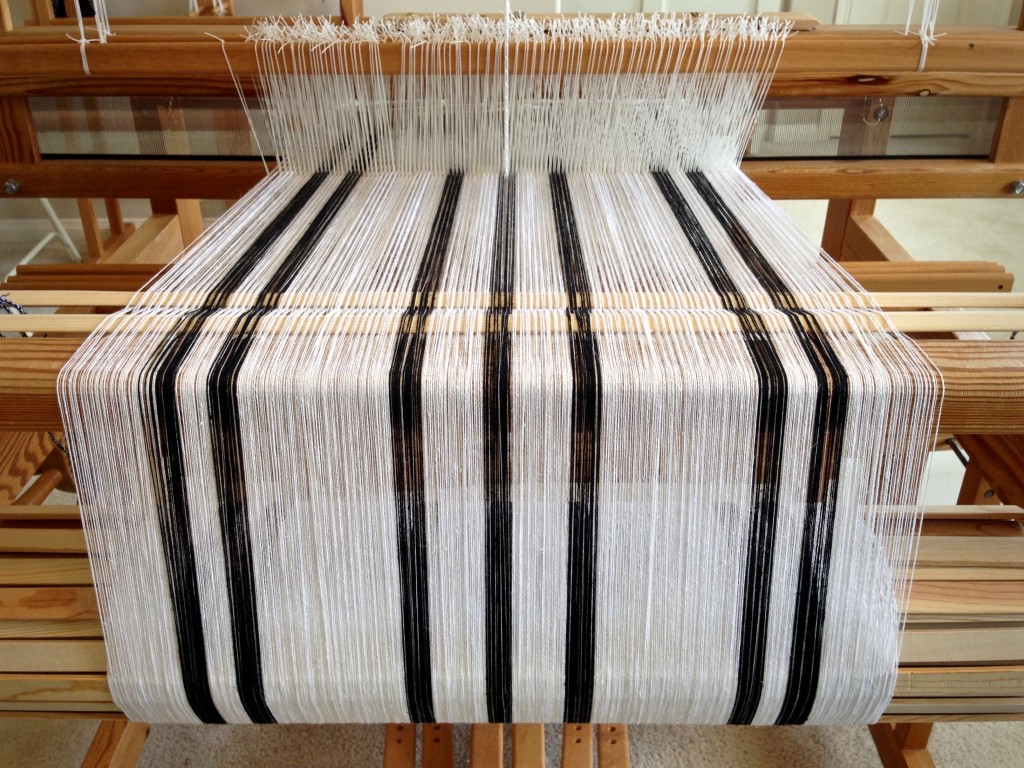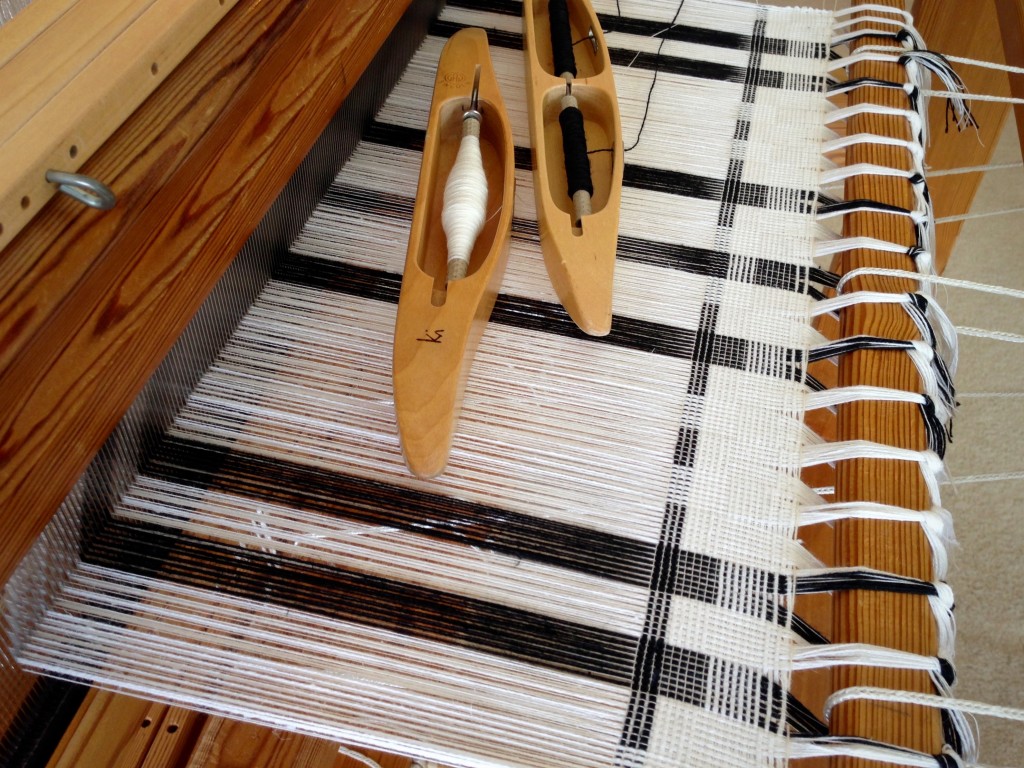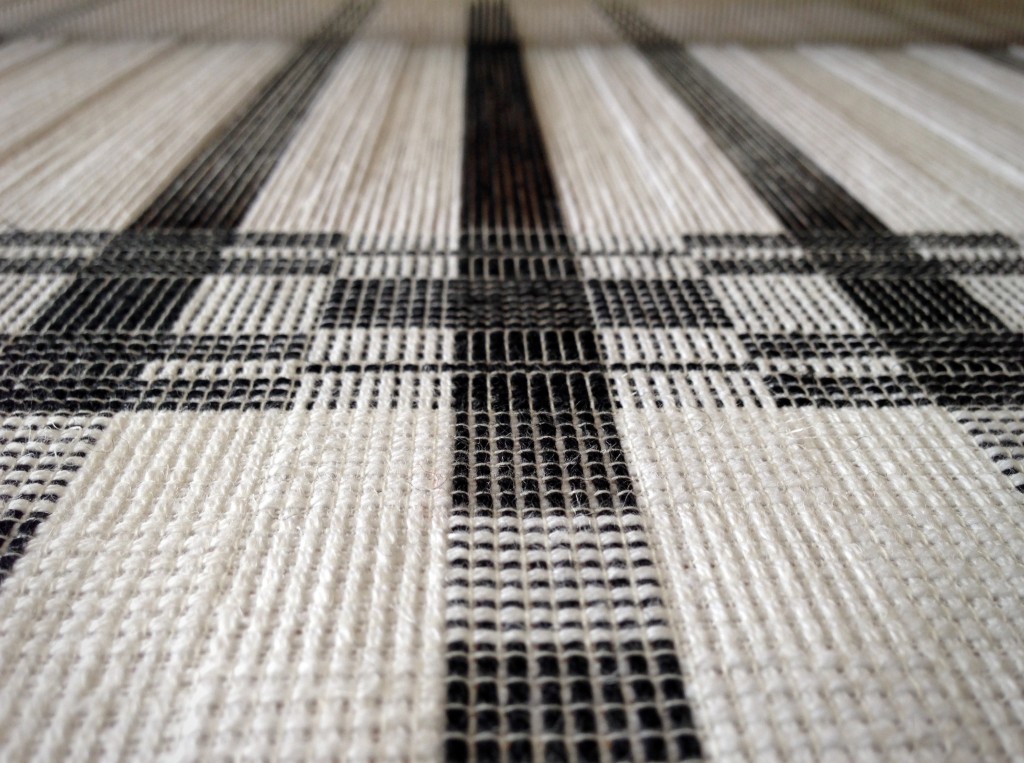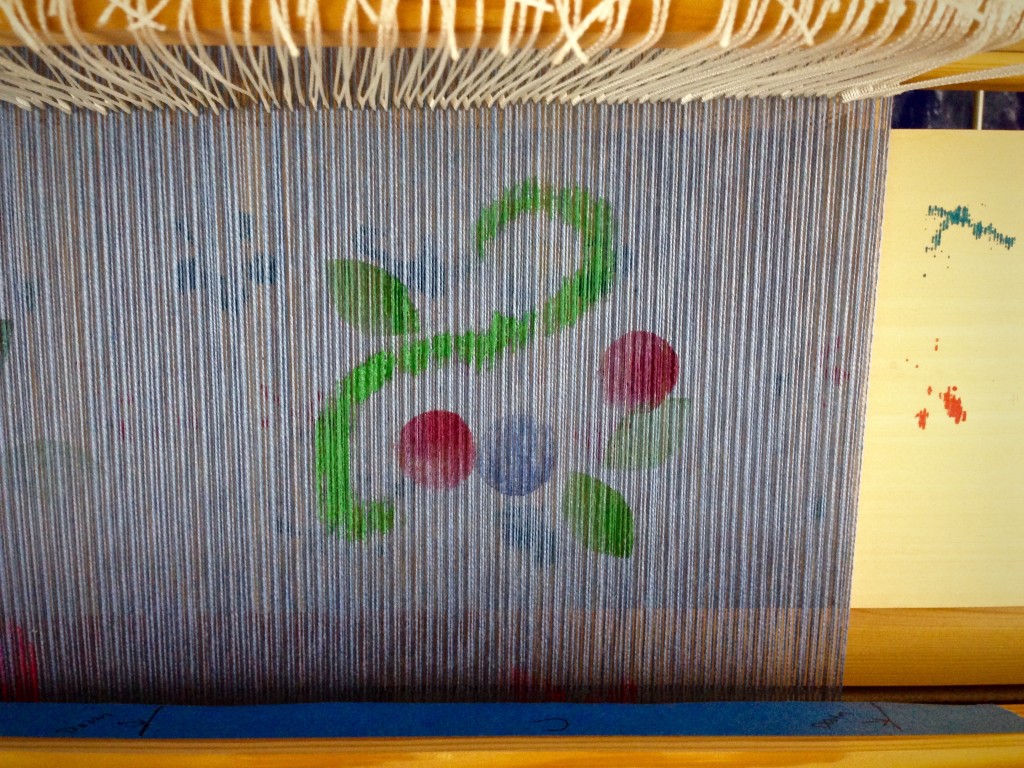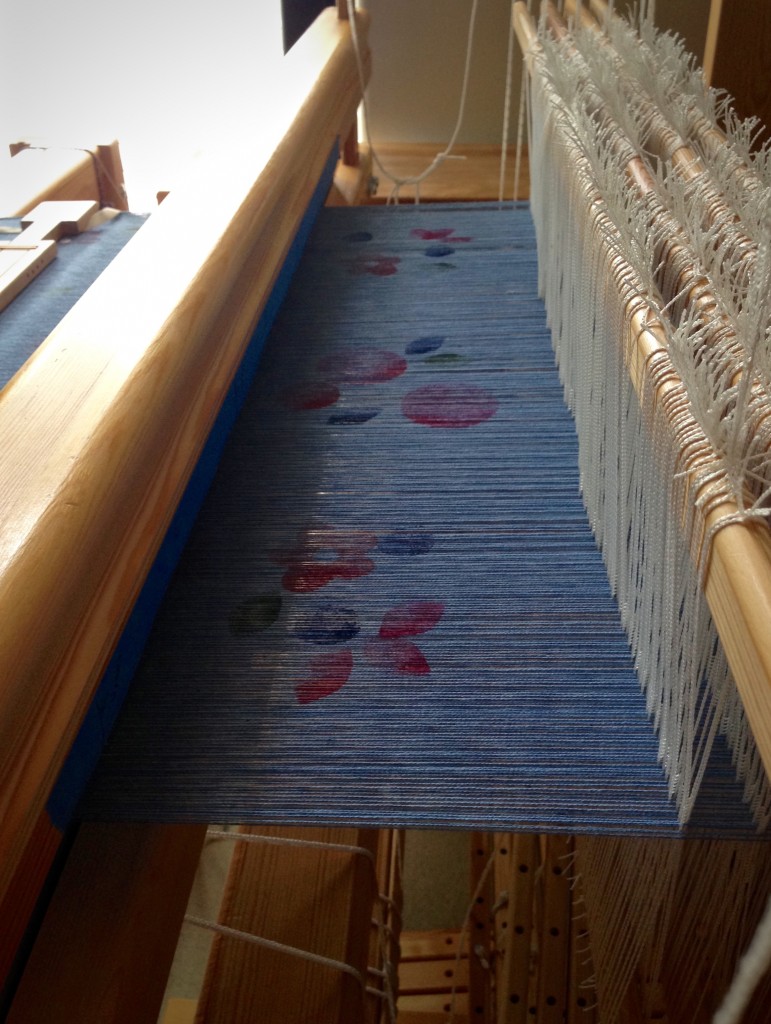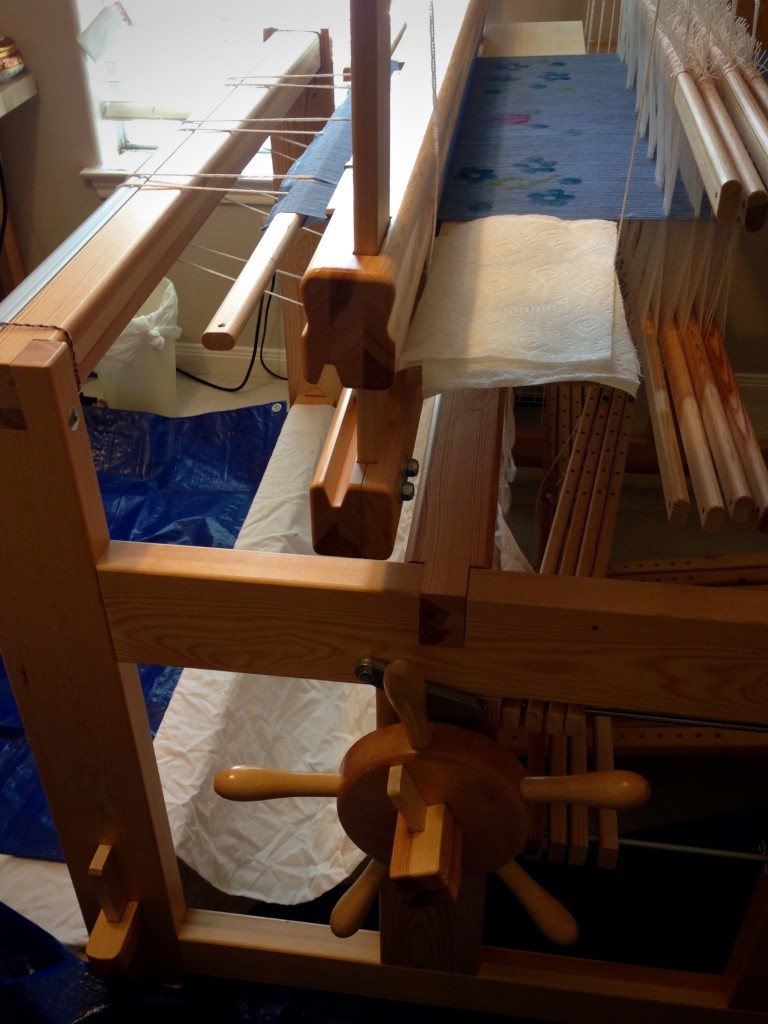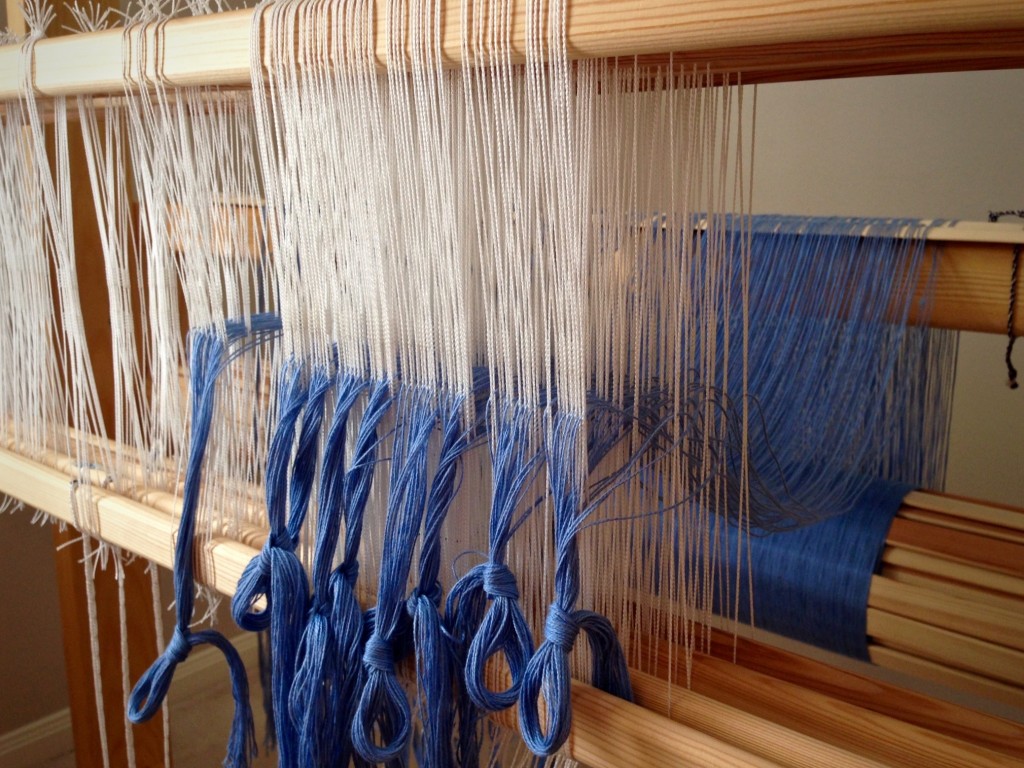The stamped fabric print is subtle and ethereal. The print goes through to the reverse side, too, which shows that the color is saturating the threads. Thankfully, there is more than just surface color, which means I can expect the woven-in print to last for the life of the fabric.

I had hoped for brighter colors, but with this fabric paint the intensity of color fades as the paint dries. And then, when the weft crosses the print it reduces the brightness even more, of course. That said, I am not disappointed. It is different from what I expected, but it will still make a pretty tiered skirt.
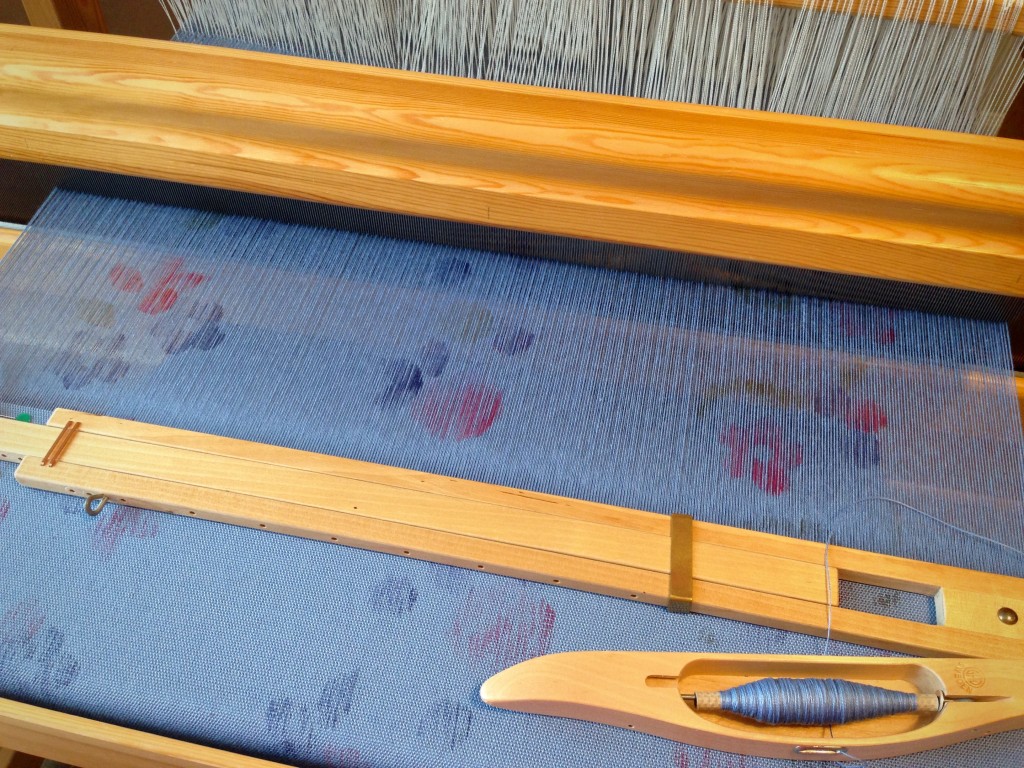
Prayer can be different from what we expect, too. Believing and praying brings amazing results. It’s not always the results we had in mind, though. The truly amazing thing is this: The prayers of believing people are somehow combined with the power of God to bring about his will. It’s his good will that gets printed deep into the fabric of our lives. Disappointment gives way to thankfulness as we see results over time that are more than just color on the surface.
May your disappointments be few.
With you,
Karen

